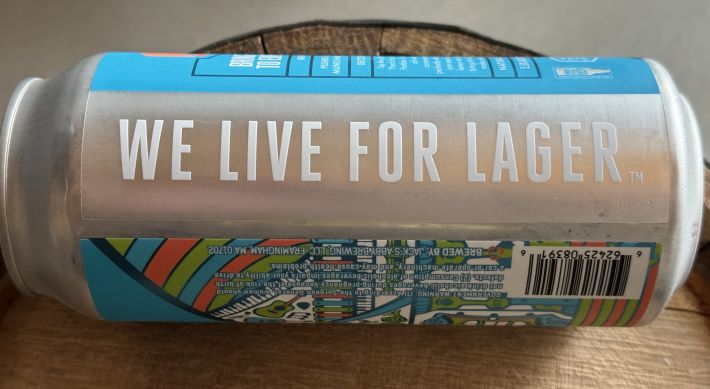
Thirty-eight years ago, Brewers Publications released its first title, “Brewing Lager Beer.”
Ten years later, when an expansive update, “NEW Brewing Lager Beer,” was published, author Greg Noonan wrote, “The trickle of knowledge available to craft and homebrewers when this book was first published has become a flood.”
Twenty-eight more years later, the newest book from Brewers Publications is “Modern Lager Beer.”
The flood has not abated, but new information is not all about MLB that is different. BLB was never just about lagers. It followed a “how to” approach, and served as a manual for home- and microbrewers, as they were known at the time. MLB is only about brewing lager and takes more of a “how they” approach. Authors Jack Hendler and Joe Connolly of Jack’s Abby Craft Lagers spoke with more than 70 brewers and beer professionals before they wrote the book.
What is the same is an important lesson: There is no one way to brew great beer, but there is a way.
The authors get right to the point in the introduction.
“When American craft brewers create lagers, they often do so without changing any of the processes or brewing techniques they use for their ales,” they write, later adding, “while American craft ale fermentation is at the absolute cutting edge of quality, American craft lager is lagging woefully behind.”
They continue, “Most brewers will state that their aim is to make great beer. But consider that greatness can often come at the expense of quality. While unique, bespoke products with interesting provenance can captivate a consumer in a specific moment, it is quality and consistency over time that defines the truly great lagers of the world.”
Their goal is to answer a basic question: What makes a great lager beer? One of the most general answers, “and the one that guides our approach to this book, is process. Over and over again, lager brewers emphasized to us the importance of their process to the finished quality of their beer.”
There is plenty of “why” in this book, about techniques and raw materials; and about ingredients that aren’t necessarily raw materials, such as carbonation and time. When “New Brewing Lager Beer” was published, Thomas Kemper brewmaster Rande Reed offered this endorsement: “To date, Greg Noonan is the only modern researcher to compile practical data on the mysteries associated with decoction mash programs.”
MLB devotes 50 pages to decoction, and also gives voice to brewers who choose not to employ decoction.
Who is the book for? Craft brewers, obviously, but while there is information in the book that homebrewers will not be able to act on, there is much they can use. There’s also something here, at not much more than the cost of a triple dry hopped hazy IPA, for beer drinkers who care about why the beer they are drinking tastes like it does.
Malt? At Bamberger Malt they allow the grains they intend to malt to determine the level of modification. Instead of homogenizing malts, they keep them separate. Brewers may choose a specific batch, recognizing it might be different than the last batch they used.
Hops? The authors describe a visit to the Seitz Family Farm in Germany’s Hallertau region. Seitz grows hops for Jack’s Abby and several other small American breweries.
Yeast? There is a discussion about the Saaz and Frohberg classifications, as well as the Carlsberg-type and Tuborg-type yeasts that differentiate American lager strains.
I’m certain that Greg Noonan would have appreciated this book. I’m equally certain that there will be fewer disappointed craft lager drinkers if more brewers embrace the lessons within. Greatness does not have to come at the expense of quality.
Definitely need to get this book.
I finally took the plunge this year into brewing lagers more regularly in my own homebrew, and to do that I knew I wanted to do it “properly”. So I got myself temperature control, I am learning the ropes of decoction mashing from a practical perspective rather than the more theoretical and sensory understanding I had before, and I am starting to think that one of the things that scares people when it comes to decoction is that in some respects you have to let go. For example, of your target saccharification rest temp is 151° but your 30 minute boiled decoction only gets you to 149° that’s perfectly ok. I am also finding that doing decoction is a much more fun brewday, and it doesn’t add that much time, especially if you are easing your way in with a single or double decoction.
The lagers I have brewed so far this year, in particular the Vienna Lager I brewed in the spring, have been the best beers I have ever brewed, and I am excited to brew more again.
And I didn’t even mention the tip about COAs . . .
I agree, at the homebrew level there is a fun aspect to decoction. My takeaway, and everybody may have their own, is what is important is to find your own process — one that makes good beer, of course. I’ve been lucky enough to hang out in several of the breweries visited in the book, so I was already predisposed to the idea.
A bigger challenge for homebrewers — and since we have lived in 5 houses in the past dozen years I know this too well — may be temperature control. For fermentation and for lagering.